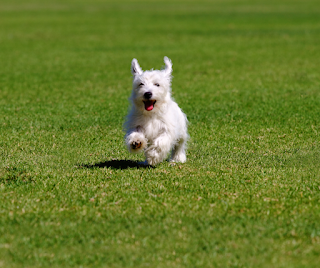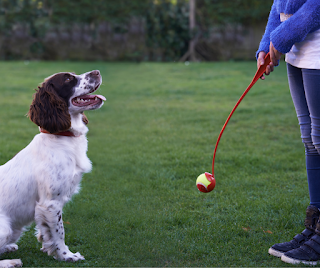5 Steps To A Rapid Recall
Teaching your dog to come back to you is arguably the most important skill they will need in life. Not only does this allow them more freedom to explore their environment at their own pace, it also ensures their safety too.
Nobody wants the dreaded feeling of seeing your dog disappear over the horizon as soon as you let them off the lead! Luckily, this is easily avoided with the right training techniques, which we shall look at below:
1. Choose Amazing Rewards
This is honestly THE most important factor when it comes to teaching your dog a recall. Without amazing, motivating rewards, you will be fighting a losing battle.
Rewards will be different for each individual dog so it is up to you to figure out what your dog values most of all. For most dogs, this will be food, although toys and praise also work relatively well.
The idea here is to find something that your dog gets really excited by. For one of my girls this is cheese, for another it is fresh cooked chicken and another is broccoli! So anything goes, so long as your dog can't wait to get their paws on it.
These should then be chopped into small pieces, big enough to get their attention but not too big that they have to take their time chewing it up. These will then become the rewards your dog receives for choosing to come back to you, so choose wisely!
2. Use Consistent Cues
This is another hugely important factor in achieving a reliable recall. Many people make the mistake of being vague or confusing with their cues. You should choose a cue that you use solely for recall and nothing else. I use 'Here' but you can choose anything you like provided you use the same word every time!
Also be sure to not fall into the trap of constantly repeating the chosen cue over and over again, without your dog actually executing it correctly, or else you run the risk of them switching off and not listening to it at all. This is also true if your dog does not actually know what that cue really means. Just because 'here' seems pretty straightforward to us, does not mean your dog automatically understands it.
3. Start At Home
Before you can expect your dog to come flying back to you when you call them out on their walks, you need to build a solid foundation at home. By making sure that you have this behaviour absolutely spot on at home first, you will set your dog up for success when they are out in the big wide world too!
It can be as simple as rewarding your dog for coming back to you from the other side of living room. Then, once they have the hang of that, you could try going to a different room and getting them to find you there too.
4. Add Distractions
Once this is being achieved every time, you may want to move outside into the garden, where there will be more distractions, but it is still a secure area. Be sure to up your rewards though as your dog will find this more difficult!
Eventually you could even try a 'temptation alley' where there are toys and even food distractions in place to try and tempt your dog. If they can successfully choose to come back to you even with those distractions, you are heading in the right direction! Be sure to only give this a try once you are relatively confident that your dog can achieve it, as you don't want to knock their confidence or chances of success.
5. Repetition
Repetition is absolutely crucial when you are working on teaching any new behaviour, particularly recall. The more you practice, the better your dog will become at coming back when they are called. This is especially true when they know they are going to receive a delicious high value treat or exciting playtime as a reward too.
Your main goal here is to simply be the most exciting option available to your dog. If you are finding that they are choosing to go and play with other dogs, or wander off sniffing for example, you need to up your reward game and decrease the distractions! As always, you should set your dog up for success whenever possible, instead of waiting for them to fail.
Until you are fully confident that your dog will successfully return to you when out on walks, they should be kept on lead. It is unfair to other dogs to allow your dog to bound up to them and interfere with them, particularly when they are on lead. It also poses a danger to your dog if you cannot get them bak to you, as they may accidentally run across roads or easily get lost and disorientated. Whilst you are working on achieving your reliable rapid recall, you may wish to consider hiring secure fields or keeping a long line attached to keep your dog safe.
You can read more about positive reinforcement training methods in my book 'Canine Contentment - The Essential Guide' by clicking here.
You can also sign up to my mailing list to keep up to date with the latest blogs here.







Comments
Post a Comment